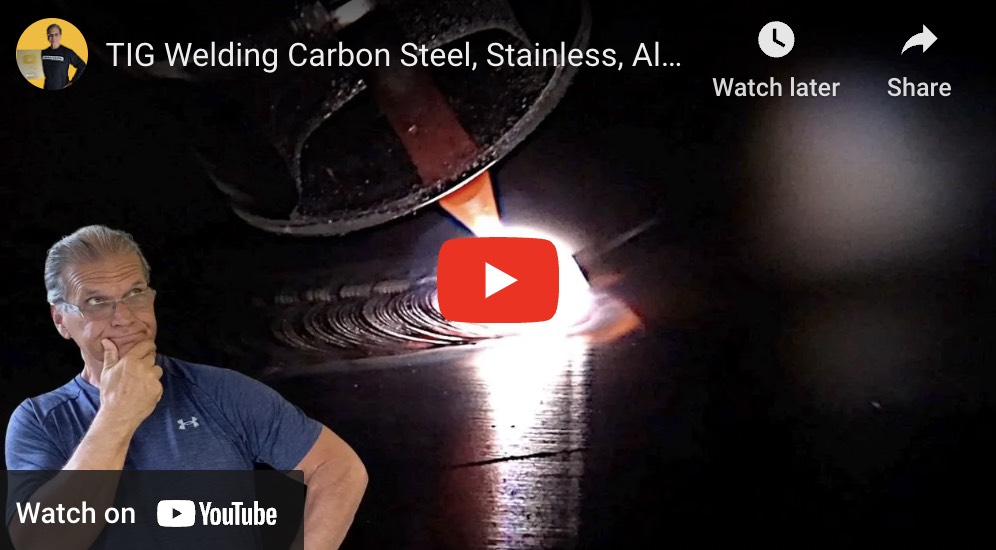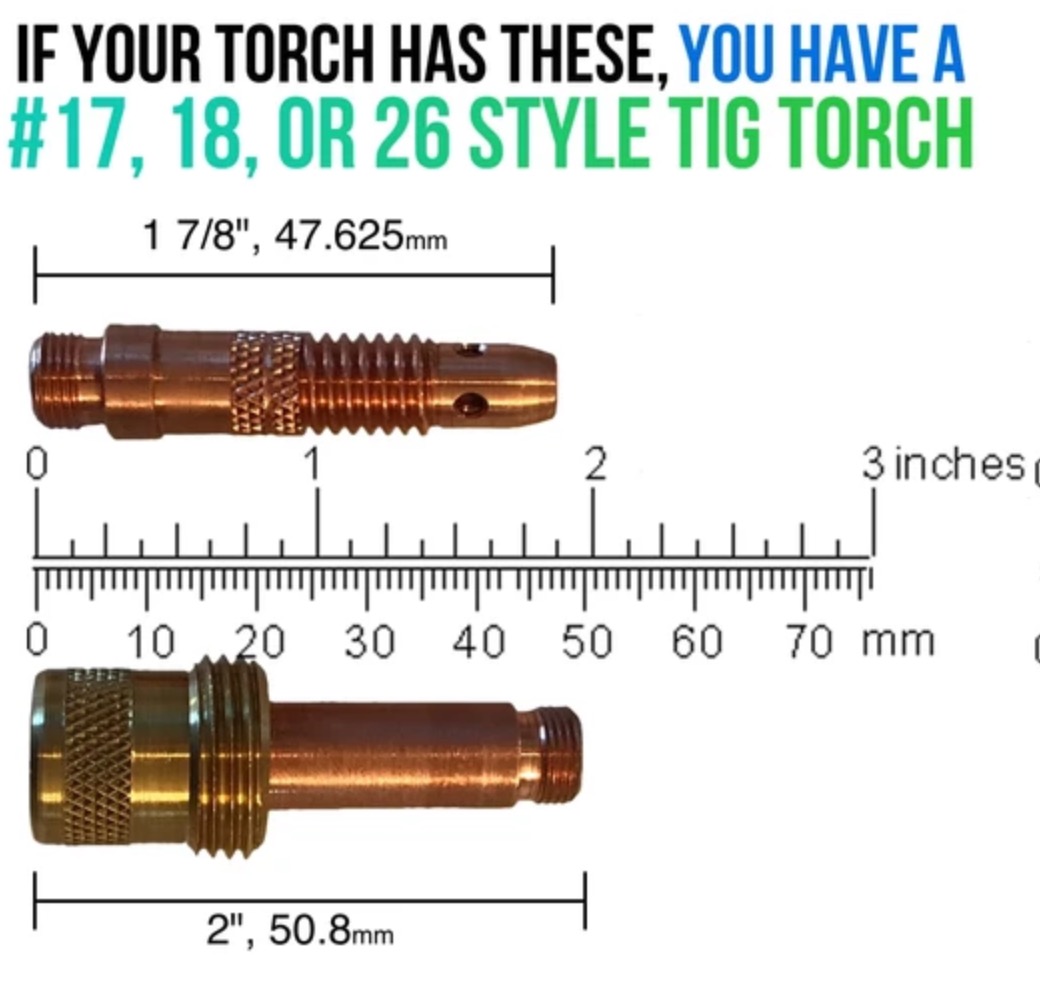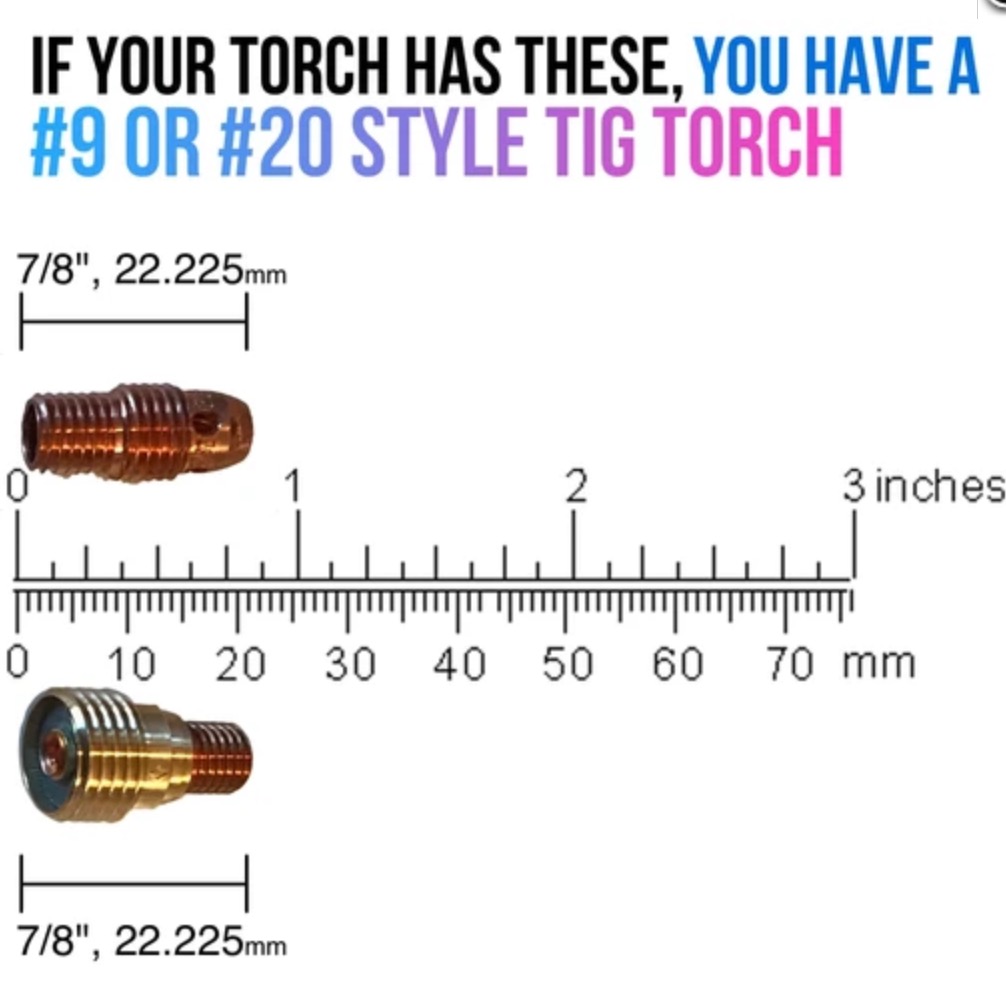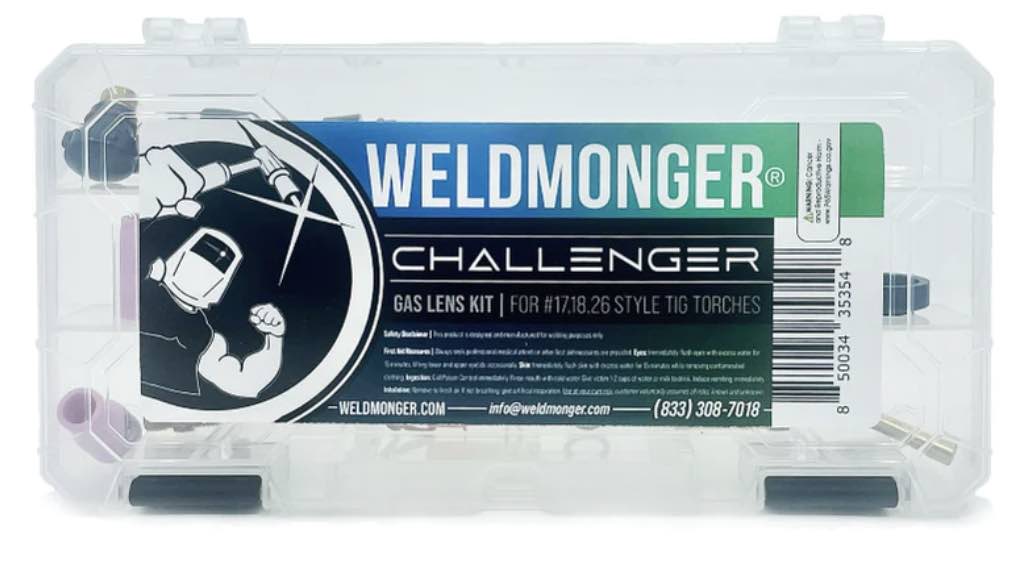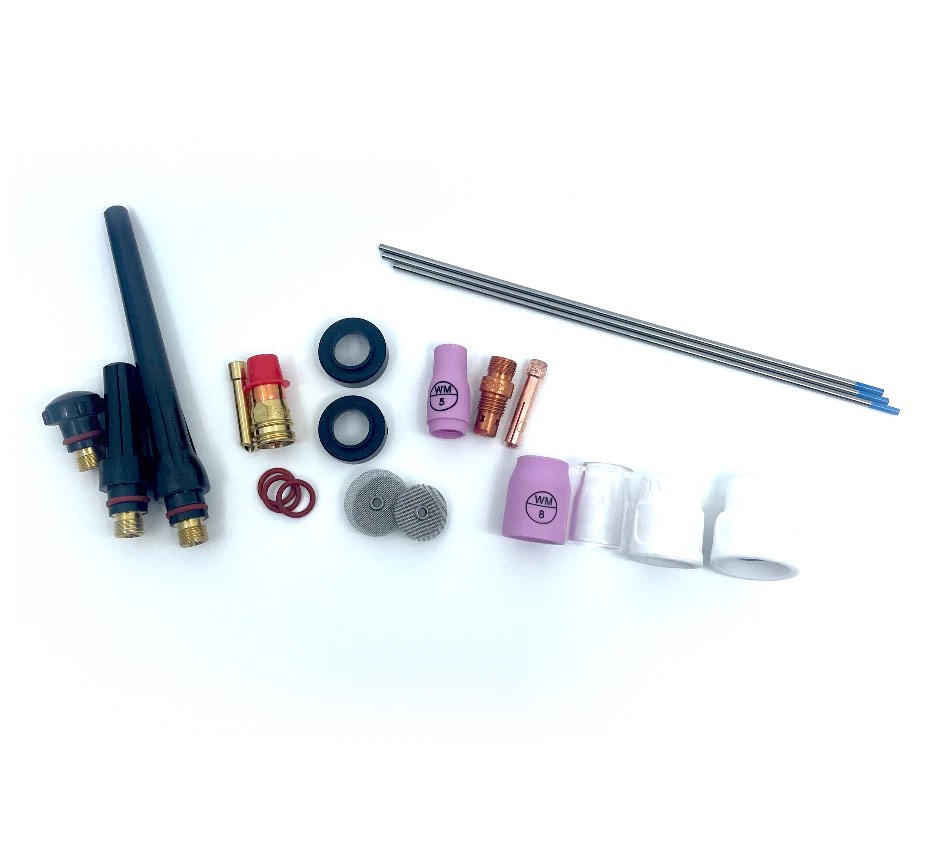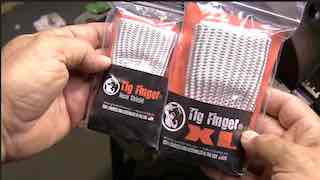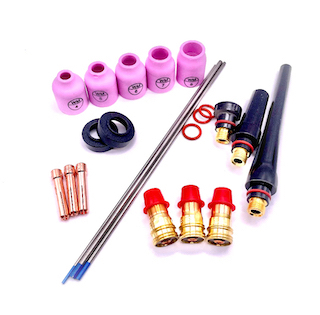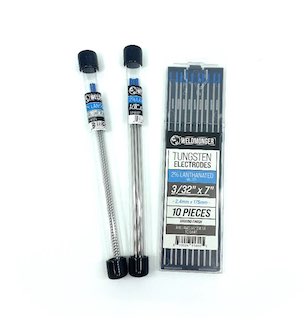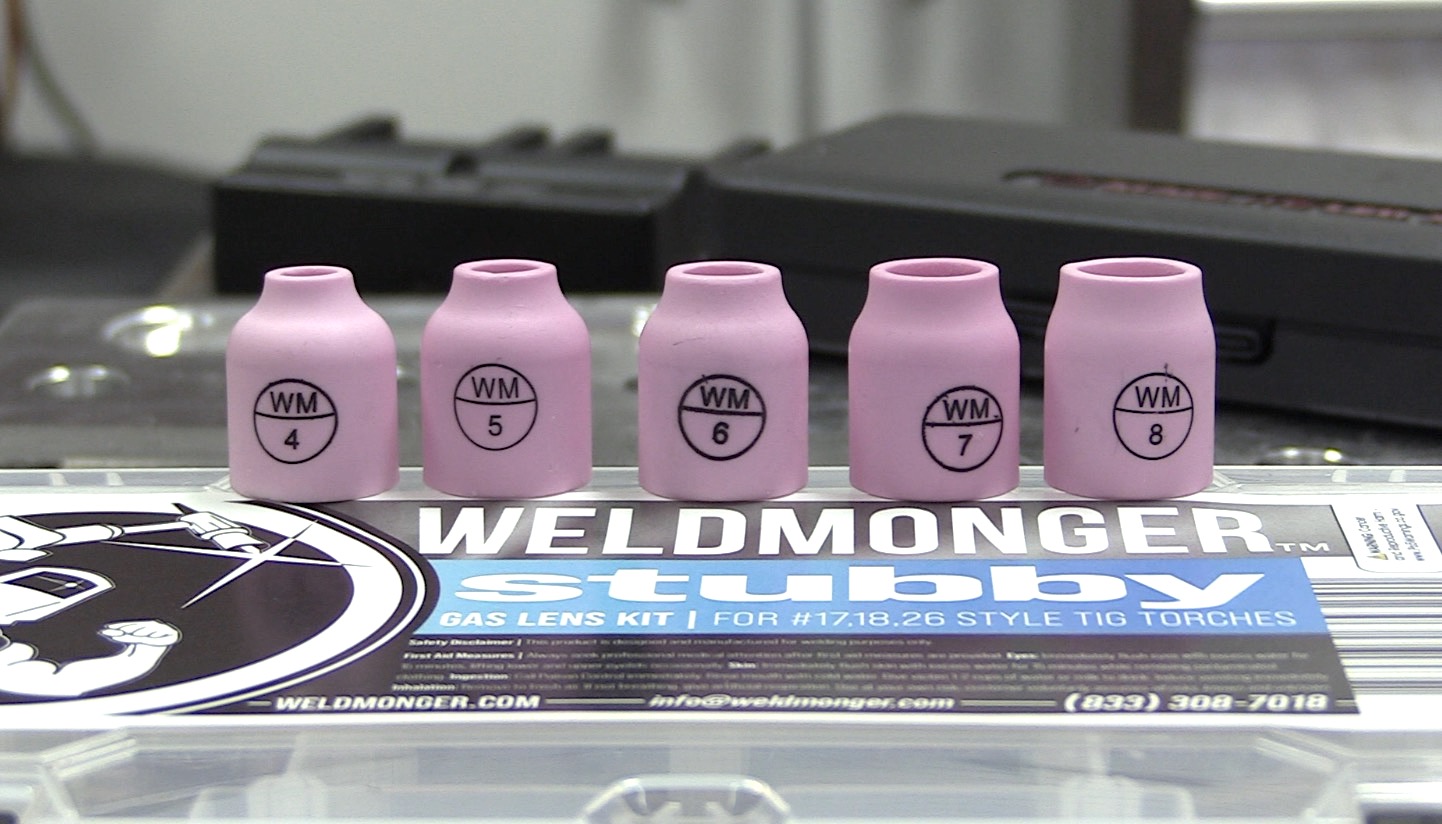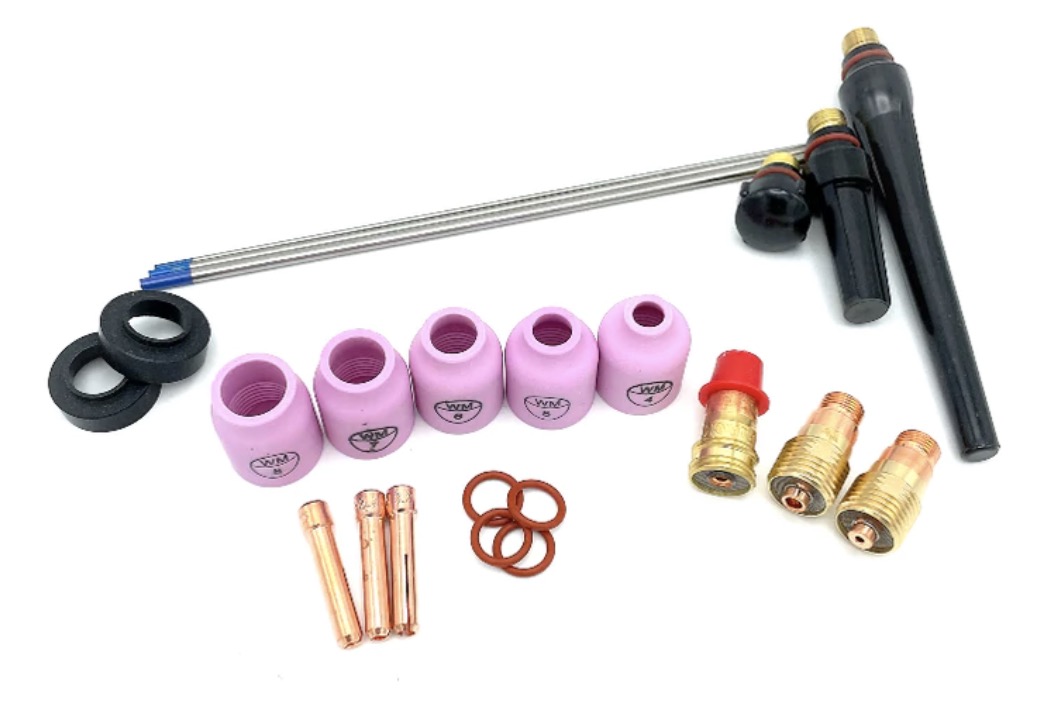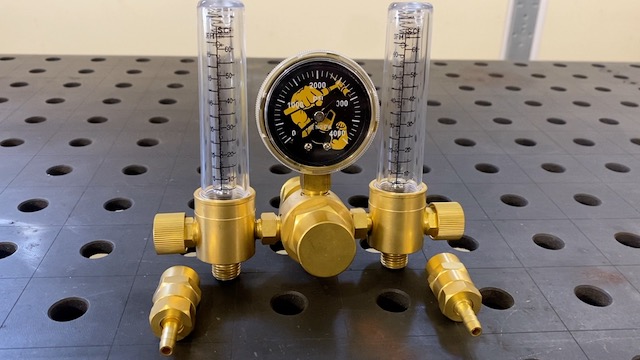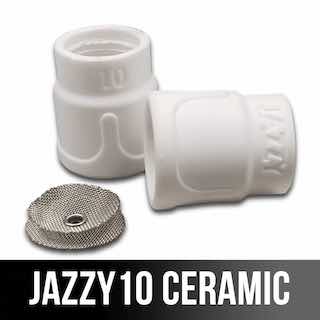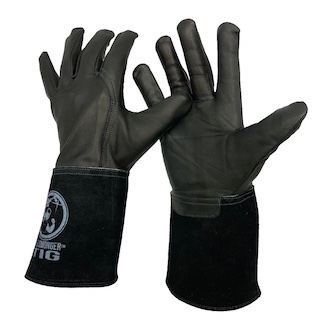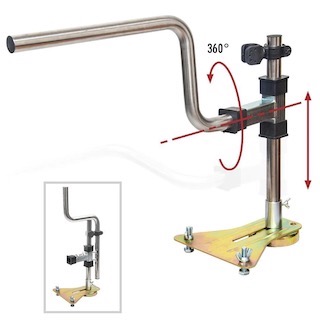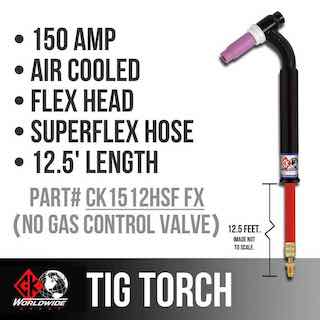ER70S6 vs ER70S2 TIG Rod on Outside Corner, Lap, and Tee Joints
Is there really much difference between ER70S-6 vs ER70S-2?
What is the difference between ER70S-6 vs ER70S-2?
When is one better than the other?
Or does it strictly come down to personal preference?
What about an open root like a 3G plate test?
This Video Shows Tips and Techniques for How to TIG Weld Carbon Steel, Stainless, Aluminum, and Titanium
How to Identify what type TIG torch you have...( don't worry, there are only 2 main styles of TIG torches)
When it comes to TIG torch parts, there are only 2 main types of TIG torches...#17, 18, 26 are one type.
And #9 and 20 are the other type
So all you need to do is take a look at your current TIG torch and see which collet body matches the photos above and then order either a kit for 17,18,26 style torch or a kit for #9 and 20 TIG torch.
Is there really much difference between ER70S-6 vs ER70S-2?
For flat and horizontal position fillet welds, like the corner, lap, and tee joints in the video above, any differences between ER70S-6 vs ER70S-2 are subtle.
I am not sure I could tell a difference if the rods were not labeled.
What is the difference between ER70S-6 vs ER70S-2?
ER70S-6 is a wire contains higher levels of Deoxidizers Manganese and Silicon (Mn & Si) compared to other carbon steel TIG wires. The higher level of silicon can make this filler metal sightly more fluid than others and in certain applications, seems to float oxides to the surface well.
AWS Chemical Composition Requirements...
C = 0.06 – 0.15 Ni = 0.15 max
Mn = 1.40 – 1.85 Cr = 0.15 max
Si = 0.80 – 1.15 Mo = 0.15 max
P = 0.025 max V = 0.03 max
S = 0.035 max Cu = 0.50 max
ER70S-2 is the most popular Tig rod for welding carbon and low alloy steels...It is a triple deoxidized steel welding wire used for both tig and mig welding applications.
chemical composition of ER70S-2
AWS Chemical Composition Requirements...
C = 0.07 max Ni = 0.15 max Cu = 0.50 max
Mn = 0.90 – 1.40 Cr = 0.15 max Ti = 0.05 – 0.15
Si = 0.40 – 0.70 Mo = 0.15 max Zr = 0.02 – 0.12
P = 0.025 max V = 0.03 max Al = 0.05 – 0.15
S = 0.035 max
so while er70s-6 does contain higher levels of silicon and manganese, er70s-2 contains other deoxidizers like titanium, zirconium, and aluminum.
When is one better than the other?
Neither rod is better. But one situation where I believe that ER70S-6 can be better is for open roots where the back side is exposed to air.
one example is shown in the video below of a 3G open root plate test.
Because of slightly better fluidity, ER70S-6 can help a root pass ...especially when the gap is a bit tight.
Open Root 3G Plate Test
Other than open roots, I think it boils down for personal preference and unique situations.
I hear plenty of comments of certain situations like perforated steel with light rust that can't always be properly cleaned where ER70S-6 is their filler rod of choice.
There are so many unique situations us welders get into, it is impossible to say one rod is better across the board.



